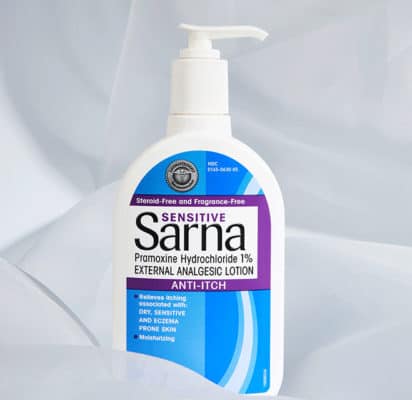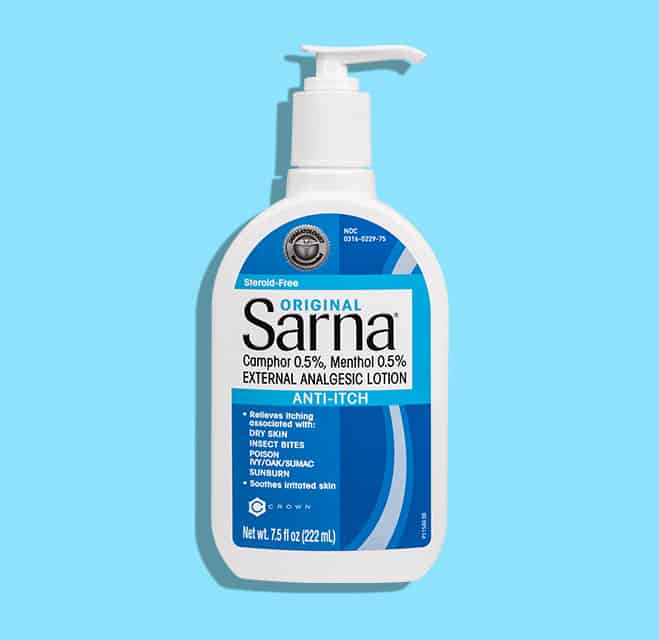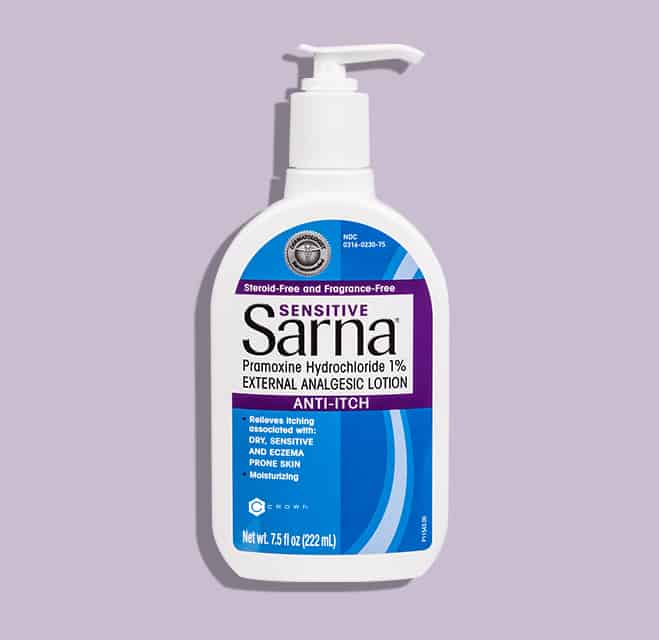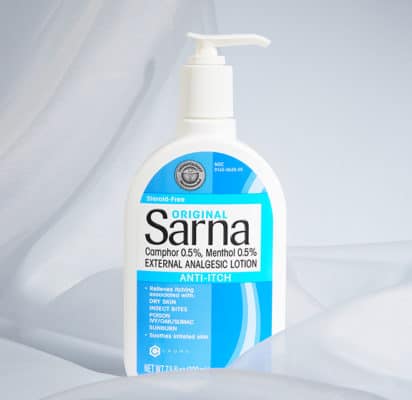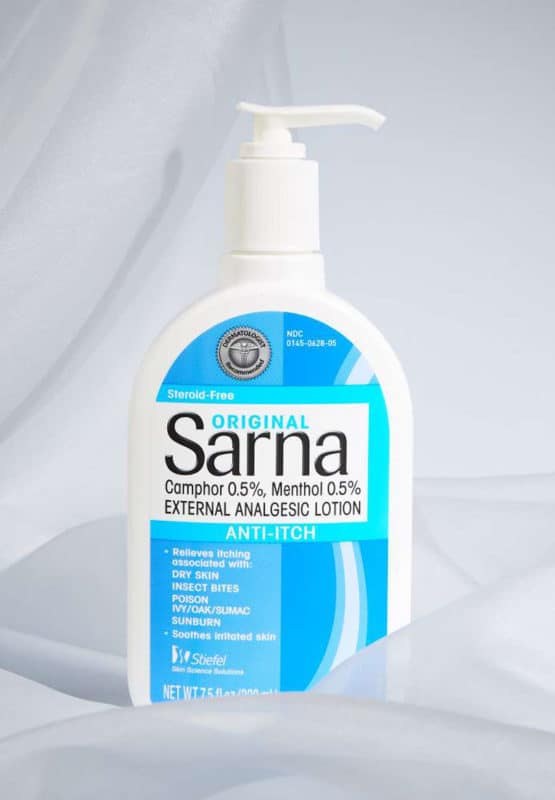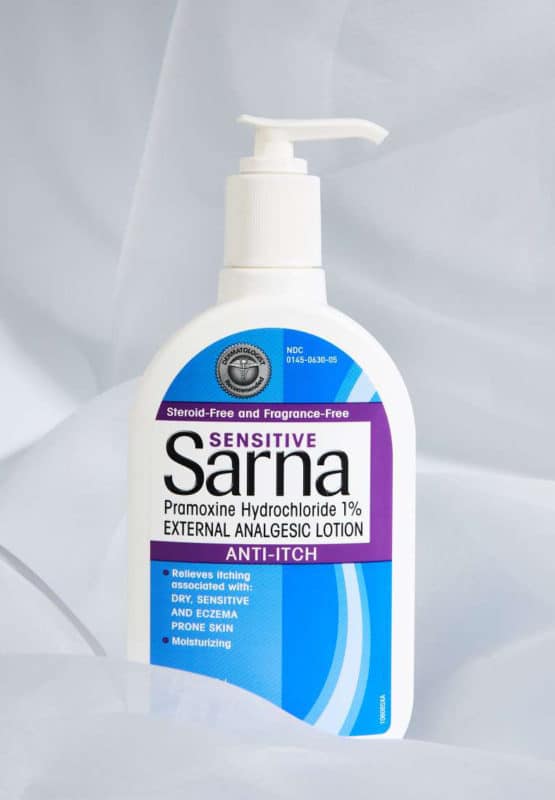If you have sensitive skin or you’re just all-around concerned about what goes on your or your child’s skin, your choices for relieving itch or pain can be limited. That’s where pramoxine hydrochloride can help.
Pramoxine hydrochloride is a powder most often used as a topical anesthetic, or “numbing agent”. You may also find it under the name Pramocaine. It was discovered in 1953 and is still widely used today due to its low tendency to irritate skin. It is the active ingredient in Sarna’s Sensitive lotion.
Pramoxine hydrochloride has multiple uses
The unsung hero in your medicine cabinet, pramoxine hydrochloride is used to temporarily relieve pain and itching from a variety of causes. If you stumbled into poison ivy or poison oak while hiking or gardening, a little pramoxine hydrochloride can stop the itch from driving you nuts. Forgot to slather on sunscreen and got sunburnt at the beach? Soothe the sting with pramoxine hydrochloride. Can’t go to sleep because eczema is keeping your child awake? Pramoxine hydrochloride can help you both catch some z’s.
Pramoxine hydrochloride can also be used to help ease the itch or pain from:
- Minor burns or minor cuts / scrapes
- Minor skin irritation or rashes
- Dry skin
- Insect bites
How does pramoxine hydrochloride work?
When applied to the skin, pramoxine hydrochloride goes to work to temporarily stop the nerves in your skin from sending the sensations of pain or itching to your brain. It’s like snail mail that just sits in the mailbox and never gets sent because someone forgets to put up the flag. Or to give a modern age analogy – it’s an email that’s written and sitting in drafts but never gets sent.
Why use pramoxine hydrochloride to relieve itching?
Pramoxine hydrochloride is widely used in topical anti-itch treatments because of its low sensitization. Sensitization occurs when a substance makes someone have an allergic reaction to something that previously had no effect.
The Environmental Working Group—a leading authority on the safety of products—ranks ingredients from one to ten, with one being the safest and ten being the most potentially harmful. The rates pramoxine hydrochloride between one and three, depending on its use.
Benefits to using topical pramoxine hydrochloride treatment
Pramoxine hydrochloride does not need to be (and should not be) ingested. In some cases, patients are unable to take oral treatments for itching due to drug interactions. There may be a risk that the anti-itch treatment may prevent a medication from working properly, or the combination could increase the risk of side effects. Your doctor or a licensed practitioner will be able to tell you whether an anti-itch treatment may interfere with your other treatments or medications.
Pramoxine hydrochloride can be applied directly to the source of the itch. Oral anti-itch treatments must be distributed throughout the body and can take some time to work. Topical treatments that contain pramoxine hydrochloride can be applied directly to the source of the itch and can, therefore, work to relieve the itch quickly.
Learn more about itchy skin conditions in our Guide to Itchy skin.


